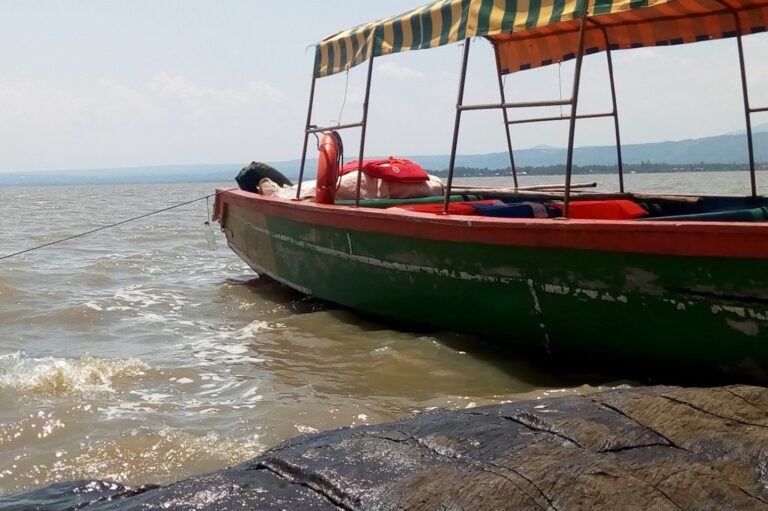Luxury Trips To
DR Congo
COUNTRY HIGHLIGHTS
A journey to the heart of DR Congo is off the trodden path somewhat, but this often results in a friendly welcome and some heart-warming interactions with the local host communities.
DR Congo - The Mighty Congo River, Apes, Culture & Music
From the Splendor of the Congo River to Encounters with African Apes...
Africa’s second-largest country, the 2,344,858 square kilometers extends west from its border with Uganda, Rwanda, Burundi and Tanzania all the way to the distant Atlantic coastline. It is arguably the most biodiverse country in Africa, best known for the green swathes of rainforest associated with the vast Congo River Basin, but also home to the western slopes of the immense Ruwenzori and Virunga mountains, as well as several massive lakes.
Unfortunately, the Democratic Republic of Congo is also one of Africa’s most problematic countries, and much of it is undeveloped for tourism and practically off-limits following long decades of poor governance and civil war.
A discovery to the southeastern part of DR Congo through Lubumbashi, will lead you to Upemba and Kundelungu National Parks. These parks are rich in diversity of natural habitats that range from the gallery forests, highland steppe, miombo woodlands, savannah and wooded grasslands. The parks have numerous gorges, waterfalls, wetlands to rivers and escarpments. On the other hand, depressions are filled with more than 20 lakes that are strongholds for exceptional fish, plants, insects, wildlife and rare bird species that are worth exploring.
The the eastern border area with Rwanda and southern Uganda, where the astoundingly biodiverse Virunga National Park reopened to visitors in 2009 and has since attracted a steady trickle of tourism, albeit with a few interruptions due to sporadic outbreaks of fighting. Easily visited as a cross-border excursion from Rwanda or Uganda, Virunga is popular with adventurous budget-conscious travelers because gorilla-tracking permits are far cheaper than in neighboring countries, and more easily obtained at short notice. The park also boasts one truly unique attraction in the form of Mount Nyiragongo, whose active volcano stretching a kilometer-deep crater hems in the world’s largest lava lake.
What's the weather like?
Best time to visit DR Congo
The weather patterns in the DR Congo differ hugely across the vast country, If you are a lover of long summer days, beautiful sunsets and perfect tanning weather, then DR Congo is most definitely an ideal destination for your next holiday. Located right on the equator, the Republic of Congo is well-known for its tropical weather all year round.
Depending on your itinerary, you can expect throughout your holiday. There’s still a small chance of rain at this time of year but the temperatures are pleasant making for enjoyable gorilla trekking. If you’re climbing Mount Nyiragongo, be prepared to get a little chilly at the top however!
January, February and March are also good times for gorilla trekking, as there’s a short break in the rains but prepare for heat and humidity. Virunga is accessible all year round, just remember that during the rains November & December; April & May the hiking becomes harder and the humidity rises. Due to its vast size, we will be keeping you posted about the DR Congo weather.
Example Trips
Book Your Tour
Browse our example trips and get in contact to start planning your very own adventure.
Escape the Ordinary
Inspiring African Luxury Travel Journal
"Can Definately Recommend"

Lea K from Denmark
"Amazing!"

Nia Gibson from United Kingdom
"Birding With Oluokos"

Nathan M from USA
"Great Experience at Ruma National Park"

Sarah G from USA
"Once In Lifetime"

Charlotte from United Kingdom
"Best Birding Guide"

Valerie M from USA
"Not Your Regular Safari/Tour Guide.... So Much More!"

Kelly B from USA
Our Photos' Credit
- Adarsh Nagda
- Doc. Victor Ikawa
- Laure Dupont Benjamin
- Steve Methu
- Oystein Storkesen
What Our Clients Say About Us
Explore More
{Oluokos Signature}
Typically replies within minutes
Any questions related to African luxury custom safari? #GoBetterWithOluokos! Please, share with us your African custom luxury safari requirement and our luxury safari designers will be delighted to assist you.
WhatsApp Us
Online | Privacy policy









